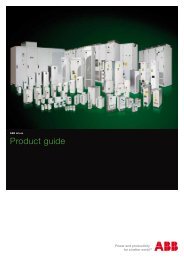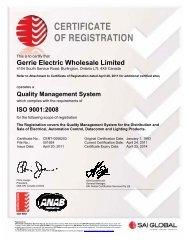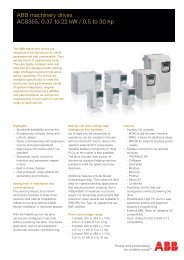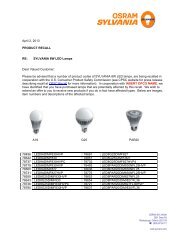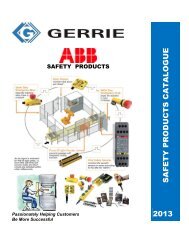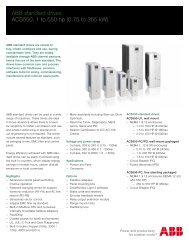PID Tuning Guide
PID Tuning Guide
PID Tuning Guide
Create successful ePaper yourself
Turn your PDF publications into a flip-book with our unique Google optimized e-Paper software.
Control Station’s NSS Modeling Innovation<br />
9<br />
Traditional ―state-of-the-art‖ process modeling and tuning<br />
tools require steady-state operation before conducting<br />
tests. Failure to achieve or maintain steady-state operation<br />
during these tests impairs the efficacy of the model<br />
parameters produced by such tools. Depending on the<br />
process involved, the impact of sub-optimal model<br />
parameters can be significant in terms of associated<br />
increases in production cost, reduction of production<br />
throughput, compromising of production quality, and<br />
overall undermining of production safety.<br />
Control Station’s NSS Model Fitting Innovation applies a<br />
unique method for modeling dynamic process data and<br />
does not require steady-state operation prior to performing<br />
tests. As a result, the innovation offers significant<br />
advantage over other modeling and tuning technologies.<br />
The NSS Model Fitting Innovation does not utilize a specific<br />
data point or average data point as a ―known‖ and is<br />
therefore not constrained by it. Rather, the NSS Model<br />
Fitting Innovation centers the model across the entire range<br />
of data under consideration. Since no data point is<br />
weighted disproportionately in the calculation and<br />
minimization of Error, the innovation is free to consider all<br />
possible model adjustments and to optimize the model’s fit<br />
relative to all of the data under analysis.<br />
Traditional Modeling Software<br />
Shown on the right is a trend of<br />
the same process data and the<br />
corresponding model generated<br />
with LOOP-PRO TUNER. Even<br />
though in the midst of a<br />
transition, LOOP-PRO TUNER<br />
accurately models the dynamic<br />
behavior and produces effective<br />
tuning parameters.<br />
Shown on the left is a trend<br />
depicting the model fit<br />
produced by traditional <strong>PID</strong><br />
tuning software. The process<br />
is in the midst of a transition,<br />
preventing the software from<br />
accurately describing the<br />
process’ dynamic behavior.<br />
LOOP-PRO TUNER




